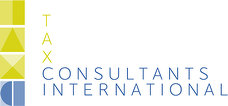Corporate Tax Services Corporate compliance Transfer Pricing Services Corporate Structuring Transfer Pricing Tax compliance
The at arm's length principle is at the heart of the Dutch transfer pricing regime.
The at arm's length principle is included in the Dutch corporate income tax act as a general principle of taxation for corporate tax payers.
Article 8b, first paragraph of the Dutch Corporate Income Tax Act 1969 reads as follows:
“Where an entity participates, directly or indirectly, in the management, control or capital of another entity and conditions are made or imposed between these entities in their commercial and financial relations (transfer prices) which differ from conditions which would be made between independent parties, the profit of these entities will be determined as if the last mentioned conditions were made.“
The purpose of this provision is to avoid that non arm’s length profit transfers between affiliated companies would affect the calculation of the taxable profits of Dutch corporate tax payers.
It is emphasized that the "at arm’s length principle" can only apply to transactions between affiliated parties. If contracting parties are not affiliated, the prices charged are automatically considered to be at arm’s length by its own nature. There may still be transfer pricing discussions, for instance relating to the allocation of the price to various elements of package deals, but the total price cannot be subject to discussion.
The law does not provide for general criteria or methods to be applied for determining an at arm's length price. The principles and methods to be applied in the Netherlands are worked out in various policy statements and closely allign with the OECD Transfer Pricing Guidelines.
Only for qualifying group financing and licensing companies the law provides for concrete criteria for determining at arm's length prices. This is laid down in article 8c of the Dutch Corporate Income Tax Act 1969. These criteria are further discussed at Dutch transfer pricing rules for financial service companies.


.png)



